JB Insights
SEBI red-flags unregulated digital gold market
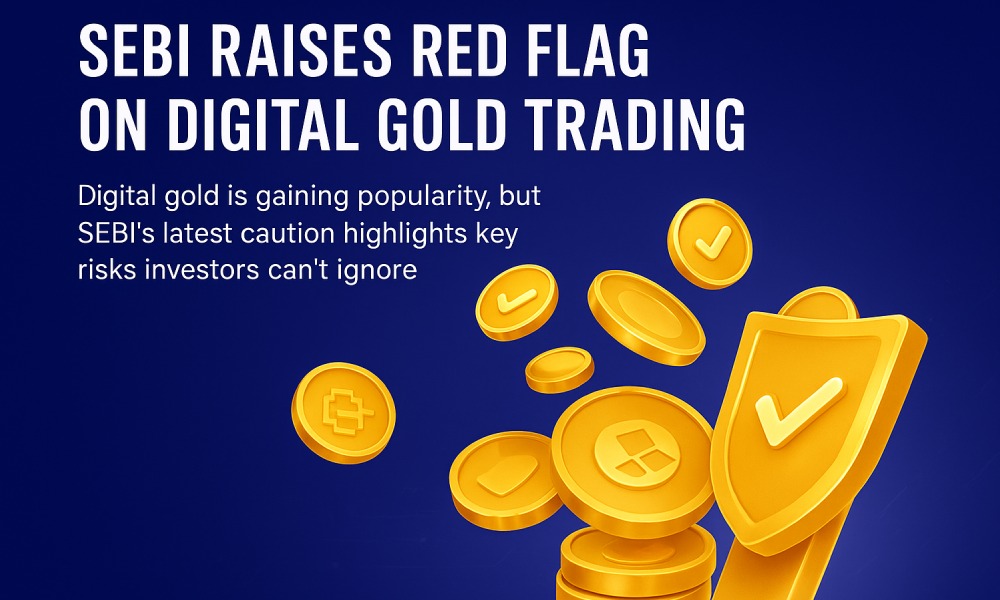
SEBI’s November 8, 2025 circular on digital gold investment exposes a critical gap in India’s financial regulatory framework. Digital gold platforms—which have attracted millions of retail investors with their low entry barriers and convenience—operate in a regulatory no-man’s land. They are neither securities under SEBI’s jurisdiction nor commodity derivatives, creating what regulators call a “shadow gold market.”
This is particularly concerning because these platforms have democratized gold investment for young, first-time investors who may lack awareness of traditional investment risks, let alone unregulated product risks.
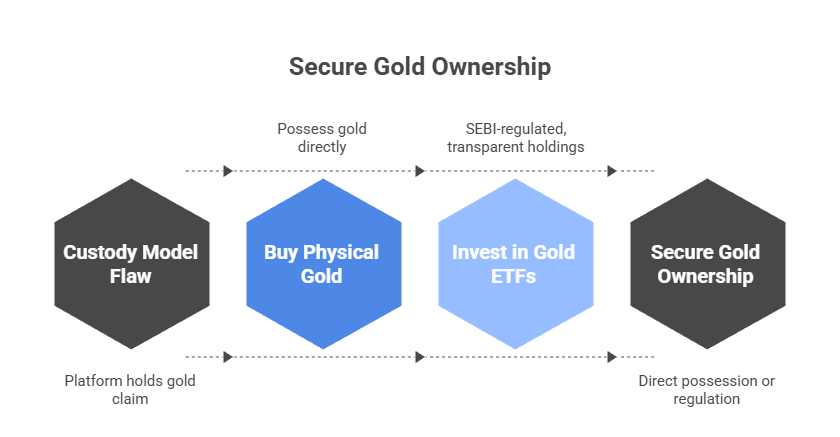
The fundamental flaw in digital gold products lies in the custody model. When you buy digital gold:
- You don’t own gold directly — you own a claim against the platform
- The platform promises to hold equivalent physical gold somewhere
- No regulatory authority verifies this claim in real-time
- If the platform collapses, you’re an unsecured creditor with no regulatory recourse
This differs sharply from buying physical gold (you possess it) or Gold ETFs (SEBI-regulated, transparent holdings).
SEBI’s timing suggests growing concerns about:
- Market penetration: Digital gold apps have scaled rapidly through fintech partnerships and micro-investment features
- Systemic risk: If multiple platforms face liquidity crunches simultaneously, millions of small investors could face losses
- Regulatory arbitrage: Companies exploiting the gap between RBI (payment systems) and SEBI (securities) oversight
Traditional SEBI-regulated products provide:
- Mandatory disclosures and periodic audits
- Net Asset Value (NAV) transparency
- Investor grievance mechanisms
- Capital adequacy norms for intermediaries
- Insurance or investor protection funds
Digital gold platforms face none of these requirements, creating asymmetric risk for retail investors.
SEBI’s Recommended Alternatives

1. Gold ETFs (Exchange Traded Funds)
- Trade on stock exchanges like stocks
- Backed by physical gold held by custodians
- Daily NAV disclosure, SEBI oversight
- Limitation: Requires demat account, less accessible for micro-investments
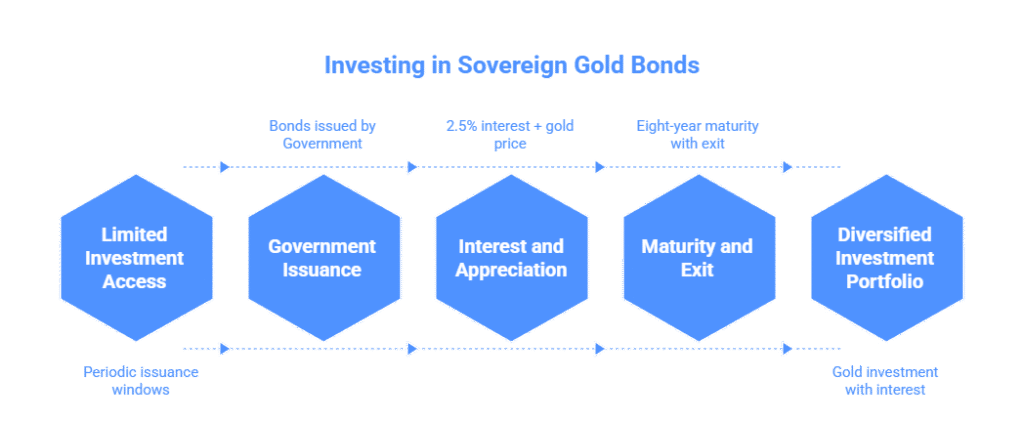
2. Sovereign Gold Bonds (SGBs)
- Issued by Government of India
- 2.5% annual interest + gold price appreciation
- Eight-year maturity with exit options
- Limitation: Periodic issuance windows, lock-in considerations
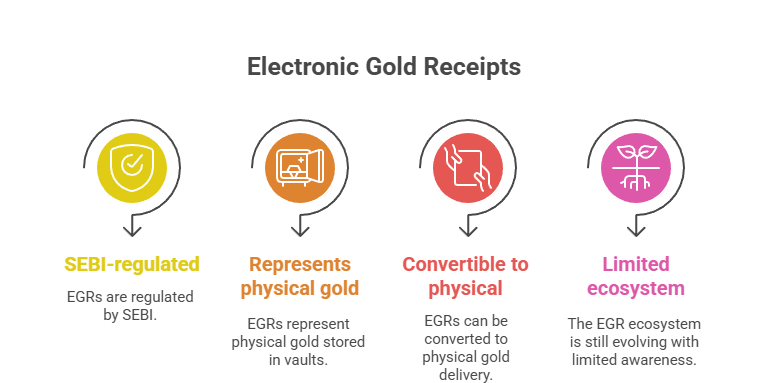
3. Electronic Gold Receipts (EGRs)
- Recently introduced, SEBI-regulated
- Represents physical gold in vaults
- Can be converted to physical delivery
- Limitation: Still evolving ecosystem, limited awareness
How Investors Are Encouraged to Buy Gold ETFs
SEBI’s clear preference for Gold ETFs as the primary alternative to digital gold reflects the regulator’s confidence in this mature, transparent investment vehicle. Here’s how investors are being encouraged to transition:
The Gold ETF Value Proposition
Regulatory Comfort: SEBI emphasizes that Gold ETFs operate under the same stringent framework as equity mutual funds—with Asset Management Companies (AMCs), custodians, and trustees all operating under regulatory oversight. Every unit of a Gold ETF represents physical gold (typically 99.5% purity or higher) stored in insured vaults.
Transparency That Digital Gold Lacks: Unlike digital gold platforms where you trust the company’s word, Gold ETFs publish daily NAV, disclose exact holdings, and undergo mandatory audits. You can verify on the NSE/BSE that your investment genuinely corresponds to physical gold.
Liquidity Without Platform Risk: Gold ETFs trade during market hours at prices reflecting real-time gold rates. You’re not dependent on a single platform’s “buyback” mechanism—you can sell on the exchange to any willing buyer. This eliminates counterparty risk entirely.
Addressing the Accessibility Gap
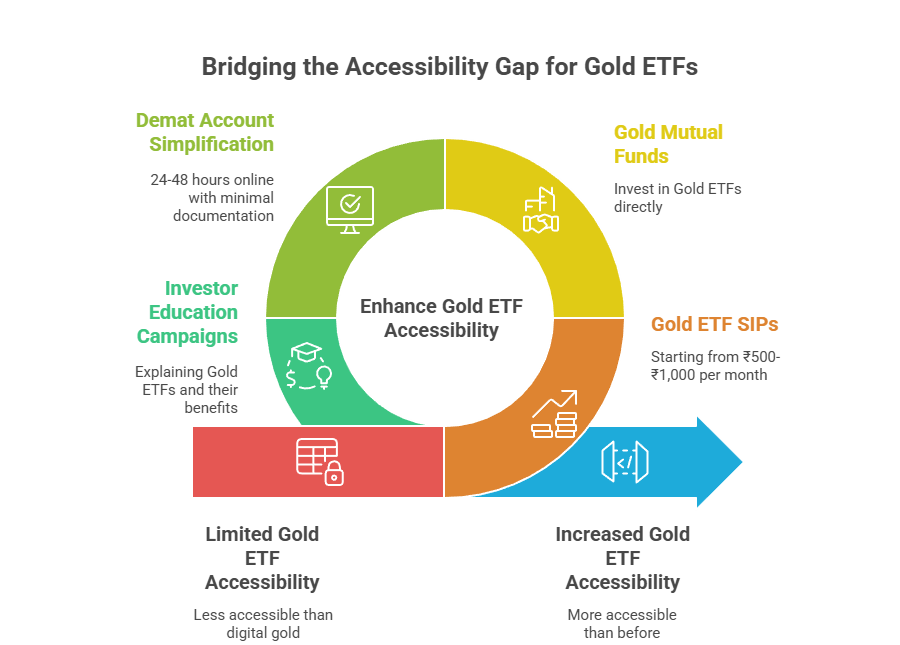
SEBI and market participants recognize that Gold ETFs have historically been less accessible than digital gold apps. Efforts to bridge this gap include:
1. Systematic Investment Plans (SIPs) in Gold ETFs: While not as seamless as digital gold’s micro-investment features, many AMCs now offer Gold ETF SIPs starting from ₹500-₹1,000 per month through mutual fund platforms.
2. Gold Mutual Funds (Fund-of-Funds): For investors without demat accounts, Gold Mutual Funds invest in Gold ETFs and can be purchased directly through AMC websites or distributor apps—combining ETF safety with mutual fund accessibility.
3. Demat Account Simplification: With digital account opening processes maturing, opening a demat account now takes 24-48 hours online with minimal documentation. Discount brokers offer zero annual maintenance charges, removing cost barriers.
4. Investor Education Campaigns: SEBI, along with stock exchanges and AMCs, has launched awareness campaigns explaining:
- How to open demat accounts
- How to place Gold ETF buy orders
- Cost comparison between digital gold and ETFs (showing ETFs often have lower expense ratios of 0.5-1% versus digital gold’s 2-3% spreads)
Addressing Behavioral Patterns
SEBI understands that digital gold succeeded because it tapped into micro-saving behaviors—auto-investing spare change, rounding up transactions, gamified savings. To compete, the regulator encourages:
Fintech-Broker Partnerships: Companies like Groww, Zerodha, and ET Money now offer simplified Gold ETF investing with:
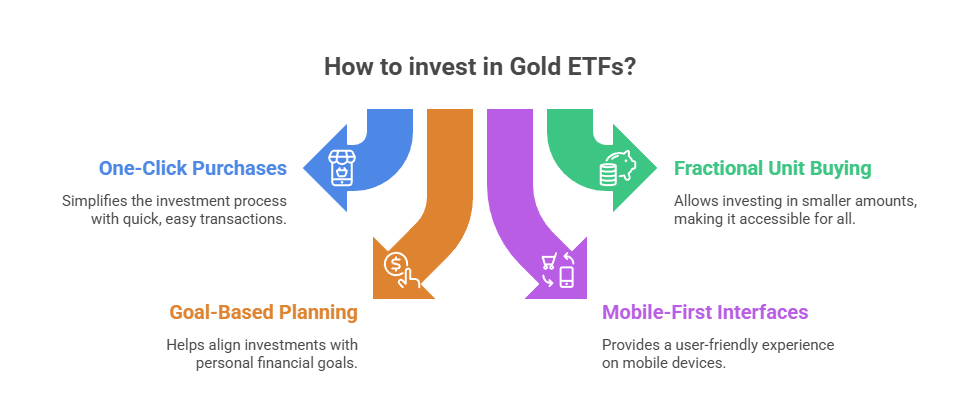
- One-click purchases
- Fractional unit buying (through mutual fund route)
- Goal-based planning tools
- Mobile-first interfaces matching digital gold apps
Employer-Sponsored Investments: Encouraging corporates to offer Gold ETF SIPs through payroll deductions, similar to PPF/NPS contributions.
Financial Literacy Integration: Making Gold ETF awareness part of SEBI’s broader investor education mandate, especially targeting young investors who form digital gold’s core demographic.
The Trust Message
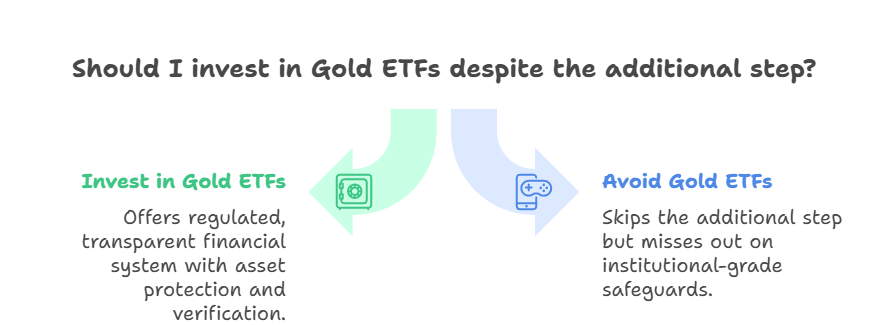
SEBI’s communication strategy essentially says: “Yes, Gold ETFs require one additional step (demat account), but that step connects you to the regulated, transparent financial system where your rights are protected and your assets are verifiable.”
The regulator positions this not as inconvenience but as investing maturity—moving from app-based gamified savings to serious wealth building with institutional-grade safeguards.
The Behavioral Shift Required

The regulator acknowledges the transition requires investors to:
- Move from instant gratification to slightly delayed gratification (demat setup)
- Accept minimum investment amounts slightly higher than Rs10
- Engage with stock market infrastructure (even if just as gold investors)
But SEBI’s message is clear: this small friction is the price of financial safety and regulatory protection—a trade-off mature investors should willingly make.
What Existing Digital Gold Investors Should Do

SEBI’s warning doesn’t mandate immediate exit but demands informed vigilance:
Immediate Due Diligence
- Verify vault partner credentials: Are they internationally certified (LBMA-approved) and India-registered?
- Check for third-party audits: Platforms like SafeGold and MMTC-PAMP publish Bureau Veritas audit reports
- Review terms of service: What happens in platform insolvency? Are you a secured creditor?
Risk Mitigation Strategies
- Diversify holdings: Don’t concentrate gold savings in one unregulated platform
- Consider gradual exit: If holding significant amounts, systematically shift to regulated alternatives
- Keep documentation: Maintain screenshots, receipts, and transaction records
Red Flags to Watch
- Platforms offering unusually high buyback premiums
- Lack of transparency about vault location or gold purity standards
- Absence of insurance coverage on stored gold
- Unclear fee structures or hidden charges
The Bottom Line
SEBI’s message is unambiguous: convenience doesn’t equal safety. While digital gold platforms offer accessibility and fractional ownership, they lack the regulatory architecture that protects investors in traditional financial products.
The push toward Gold ETFs represents SEBI’s vision of democratized yet protected gold investment—combining the transparency of regulated markets with increasingly accessible entry points. The regulator is betting that as investors become aware of the risks in unregulated platforms and the improving accessibility of ETFs, market forces will naturally drive capital toward safer alternatives.
For investors, the choice isn’t necessarily between digital gold and regulated alternatives, but rather understanding that with unregulated products, you are accepting risks that no authority will help mitigate. That’s not inherently wrong—it’s just a decision that should be made with eyes wide open.
The market will likely bifurcate: platforms that voluntarily adopt higher standards (third-party audits, insurance, transparent custody) may survive and thrive, while those operating opaquely face increasing investor skepticism and eventual regulatory pressure. Meanwhile, Gold ETFs are positioned to capture the quality-conscious segment of gold investors who value regulatory oversight over marginal convenience.
Key Takeaway: In India’s gold investment landscape, regulatory oversight isn’t just bureaucratic red tape—it’s the difference between an investment and a gamble on platform solvency. SEBI is making the case that Gold ETFs offer the best of both worlds—the convenience of modern financial infrastructure with the safety of regulatory supervision.
JB Insights
WGC REPORT: India gold market update: Seasonal strength

Highlights
- Gold prices soften from record highs yet remain supported
- Domestic prices slide back into discount
- Gold demand, led by investment buying, strengthened during the festive period, but softened thereafter
- Gold ETFs continue strong momentum in October with record inflows and new investors
- Gold imports soar in October, despite the price rally
Looking ahead
- The busy wedding season over the coming months (November–March), with a high number of anticipated weddings, is expected to support jewellery demand.
- Investment interest in gold is likely to persist amid broadly bullish sentiment around gold.
Prices retreat from peak, but maintain firm trend

International gold price1 recorded a sharp rally in October, hitting its 50th record high of the year during the month. Although price eased by about 7% from the peak, it still ended October 5% higher at US$4,011.5/oz. The momentum carried into November, with price up nearly 3% m-t-d as of 19 November. This sustained performance has lifted gold’s y-t-d gains to 58%.
Our Gold Return Attribution Model (GRAM) suggests that recent movements in international gold prices have been driven by geopolitical risk, higher implied volatility, a stronger US dollar, as well as momentum and evolving interest-rate expectations.
Domestic gold prices have largely tracked the international trend but have delivered even stronger returns, recording 63% y-t-d growth. The higher domestic gains are attributed to the 3.3% depreciation of the Indian rupee. Domestic gold prices, which had mostly traded at par with, or at a premium to, the international price over the past two months, shifted to a discount following the peak festive demand period (Chart 2), with the m-t-d2 discount averaging US$18/oz.
Festive demand shines, tapers after

Festive demand around Diwali and Dhanteras3 – India’s peak gold-buying occasions – was reportedly strong despite record-high prices, according to feedback from industry stakeholders. Market participants consistently highlighted that the strength was driven primarily by investment-oriented buying, particularly bars and coins, with some noting volume nearly doubling from a year ago. E-commerce platforms also saw solid sales,4 and digital gold purchases rose too. Unified Payments Interface (UPI) data shows digital gold purchases increasing 62% m/m to INR22bn (US$259mn) in October.5 In tonnage terms, the volume rose 45% m/m to 1.8t.
Jewellery sales also held up well during the festive period, with retailers reporting healthy sales across both single-store and large multi-store formats, the latter benefitting from brand trust and promotional initiatives. Although jewellery volumes were softer due to elevated prices, the overall value of sales remained healthy, reportedly up by around a quarter y/y for many, reflecting resilient festive buying sentiment.
Post-Diwali, demand has reportedly softened. Industry feedback suggests market activity in November has been subdued, despite the onset of the wedding season. Jewellery buying is largely wedding-driven, while investment demand persists. Supply of old gold into the market has reportedly moderated. Trade participants attribute this to consumers having exhausted surplus gold for immediate needs and now choosing to hold onto jewellery in expectation of further price gains. Jewellers remain cautiously optimistic that the ongoing wedding season (November–March) will boost jewellery sales, given the expected large number of weddings.
ETFs: persistent strong inflows

October marked the sixth consecutive month of strong inflows into Indian gold ETFs, emphasising the growing appeal of gold as an investment asset in various forms.
Net inflows for the month were INR77bn (US$876mn), a modest 8% decline from the previous month, largely in line with our estimates.7 Despite this moderation, the figure remained significantly higher than the y-t-d average of INR28bn (US$315mn). The dip was primarily due to a sharp rise in redemptions, which hit a record INR21bn (US$244mn). This surge in redemptions was likely driven by profit-taking following the rally in gold prices. Gross inflows for the month, however, set a record at INR99bn (US$11bn). The exceptional rise in gold prices likely drew investor attention, contributing to the strong inflows, while ongoing safe-haven demand further reinforced this trend. Net inflows have continued into November, reaching INR24bn (US$269mn) during the first 17 days of the month.8
The first 10 months of 2025 have been particularly strong for gold ETFs, with cumulative inflows totalling INR276bn (US$3.1bn) – the highest annual inflows on record. This surpasses the total inflows from March 2020 to December 2024. This unprecedented demand has propelled the assets of these funds to historic levels. As per AMFI data, as of end October, the assets under management (AUM) of gold ETFs climbed to a record INR1,021bn (US$11.5bn) and gold holdings rose to 83.5t,9 nearly a third of which were added in 2025 alone.
The growing interest in gold ETFs was further evidenced by the increase in new investors. In October, a record 911,000 new accounts (folios) were added, bringing the total number of folios to 9.57mn, reflecting a 49% increase y-t-d.
In addition to the strong performance of existing gold ETFs, the market saw the launch of a new gold ETF in October,10 bringing the total number of gold ETFs in India to 23.
Imports surge to new peak in October despite price rally
Gold imports registered a sharp surge in October, marking the fourth consecutive month of growth in both value and volume terms. Notably, the increase occurred despite domestic gold prices touching record highs – rising 60% y/y and 11% m/m11 – indicating resilient domestic demand. In value terms, imports climbed to US$14.7bn, the highest on record, translating into a ~200% y/y and 53% m/m increase. Import volumes also rose substantially, with inflows estimated at 137–142t, compared with 102t in September and 61t a year earlier. The October surge was largely driven by seasonal factors, i.e. the Diwali festivities and the onset of the wedding season.
On a y-t-d basis, gold imports have totalled US$51bn, an increase of 16% y/y. In contrast, the import volumes, estimated at around 559t, are down 12% from a year ago, reflecting the impact of elevated gold prices.
-

 BrandBuzz2 weeks ago
BrandBuzz2 weeks agoIndriya unveils Rajashree, the Bridal Collection of Maharashtra
-

 International News2 hours ago
International News2 hours agoDMCC Launches ‘DMCC FinX’ To bridge institutional capital, trade and technology
-

 International News3 hours ago
International News3 hours agoGJEPC organises 22nd consecutive ‘India Pavilion’ at Jewellery Arabia in Bahrain
-

 National News5 hours ago
National News5 hours agoBengaluru-based lab-grown diamond jewellery startup ONYA raises ₹5.5 crore in pre-seed funding led by Zeropearl VC







